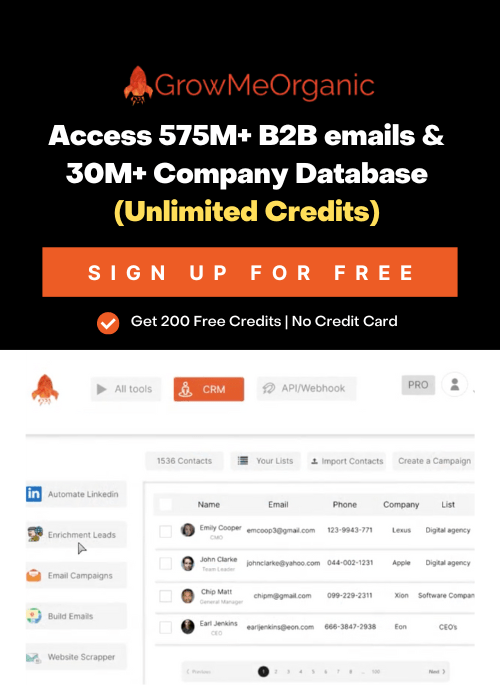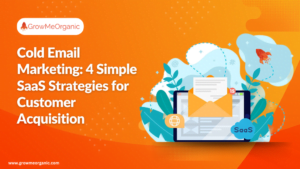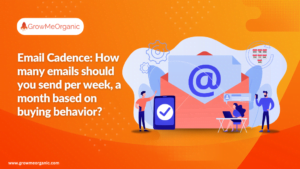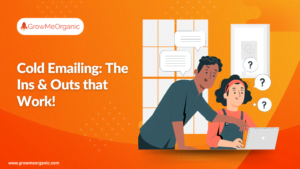Email marketing can overwhelm beginners, but understanding its terms is crucial. It sharpens strategic thinking, improves team communication, and ensures legal compliance. Legal terms guide audits, while others highlight trends to enhance campaigns. Use this glossary to build knowledge and navigate email marketing with confidence.
70 Email Marketing Terminologies to Know
These basic email marketing terms should fall in your forte to make your campaigns count.
A/B Split Testing
It is a way of comparing the results of two or more email variants and concluding that they are the same. As the name suggests, you prepare variants of the same email and name them A, B, C, etc. Comparing the results of different people can help you find the most effective one.
The Ratio Of Attachments Opened
The attachment open rate is the percentage of people who click to open the attachment you send via email.
Automated Follow-Up
Consider following up with the recipient after sending an email to remind them about the topic. Tools like GrowMeOrganic can automate this process.
Note – 80% of sales also require more than a five-step follow-up.
Email Autoresponder
An email autoresponder is a tool that automatically sends predefined email responses based on user actions or triggers. It’s commonly used for tasks like welcoming new subscribers, confirming purchases, or nurturing leads with a series of follow-up emails, ensuring timely and consistent communication.
Bouncing Rate
Your bounce rate is the percentage of emails that didn’t reach your recipients’ inboxes.
Blocked/Blacklist
Email blocking occurs when spam filters or other factors prevent your emails from being sent. This happens when you send a spam-looking email or cross the Gmail daily sending limit.
A domain may be blacklisted for sending too many unsolicited/phishing emails if anti-spam groups blacklist it. The chances of a blacklisted domain being treated as a spammer are high once it has been blacklisted.
There are tools such as mail-tester that will help you check whether your domain is blacklisted.
Mass Email/Bulk Mail/Email Cadence
Mass emailing is sending a single email to hundreds of people simultaneously.
Anti-Spam Law
In the USA, the Controlling the Assault of Non-Solicited Pornography and Marketing Act of 2003 primarily restricts the ability of businesses to send misleading emails to recipients.
The CTA (Call To Action)
A request or order is typically included at the end of an email to entice the recipient to take action, such as “Download the app now”.
Canada’s Anti-Spam Law (CASL)
Canada has an act that requires Canadian and international organizations to receive consent from recipients before allowing them to send commercial emails within, from, or to Canada.
Sending A Cold Email
“Cold email” refers to an email sent to someone you don’t know to explain your products and services. You aim to craft cold emails that match your business propositions.
Ratio Of Conversions
In email marketing, conversion rate refers to the percentage of people who complete your desired task.
Example: When you email a person to make them sign up for your app, it’s a conversion.
IP/Domain Dedicated
You can access your website anywhere using this IP address or domain name if you have a dedicated IP address.
Domain Key Identifier (DKIM)
A domain-key identifier (DKIM) enables an organization to take responsibility for an email sent. Based on the reputation of previous emails, the organization’s emails will be handled further.
Using Drip Marketing
Drip campaigns involve sending pre-written emails in response to the recipient’s behavior.
Client For Email
Email clients allow you to use emails directly from your computer’s desktop without logging into a browser. Microsoft Outlook is a good example.
Harvesting And Scraping Email
Email harvesting is the process of harvesting email addresses from similar industries or interests to send a mass email. Special email harvesting tools are available.
Many countries consider it illegal to collect emails without the user’s consent. Don’t spam users with your emails unless you have their permission first.
Phishing Via Email
It is an act of fraud where scammers send mass emails illegitimately using the name of a popular company to capture personal information from unaware people like credit cards, passwords, etc. You can avoid phishing attacks by utilizing a secure password manager.
Queue Of Emails
Essentially, it is a chain of all your emails that need to be sent one after another. Whenever you automate an email campaign, all the emails are queued together.
Grey Mail
A recipient has chosen to opt-in but has lost interest over time as the topic itself has lost interest to him. The emails you send to them are known as grey emails because they don’t entirely fall under the spam or legitimate categories.
Blocking Images
Email clients often block images by default or based on recipient preferences. While this saves time and data, it limits marketers’ ability to communicate visually. This challenge makes plain-text emails a preferred choice for mass email campaigns to ensure better deliverability and readability.
A Double Opt-In Process
Whenever a reader reads your blog and wants to opt-in to your newsletter, send him a test email to confirm his email address. Doing this will ensure your email list is clean and that all recipients are eager to receive emails from you.
Sending An Email Campaign
An email campaign is a series of emails to achieve a specific goal. Multiple follow-ups follow a primary email. These follow-ups are designed differently depending on how they were handled, such as whether they were opened, responded to, or not opened.
Deliverability Of Emails
Email deliverability refers to how easily an email lands in the recipient’s inbox. If it is high, it is more likely that your email will be read.
Filtering Emails
A filter for emails identifies whether an email is important, promotional, social, or spam and classifies it accordingly. Using these filters can save you a lot of time.
List Of Email Addresses
It usually contains information about individuals, such as their names, email addresses, workplaces, and locations. Such lists assist with segmentation and personalization.
Email Service Provider (ESP) or Webmail
“Email service provider” refers to any company providing email services. For example, Gmail is the most popular email service provider.
Templates For Email
An email template is an email that is already made to serve a specific purpose. Some emails are specifically designed for particular actions.
When someone submits their resume to your company’s career ID, they receive an email telling them that you are reviewing it.
Verification Of Email Addresses
In email verification, you remove fake emails, invalid emails, sensitive emails, or emails that appear unusual. Email lists should be verified at least every three months.
The Honey Pot
Immediately after harvesting a spammer’s email, an anti-spam entity flags it for spam. A honey pot is an email address that is used as a spam trap by an organization to combat spam.
Sender Policy Framework (SPF)
SPF is a method to prevent email spoofing by verifying if the email originates from an authorized IP address, ensuring sender authenticity and security.
Sender Score
An IP reputation score (0–100) functions like a credit score, guiding email services to decide inbox placement based on the sender’s trustworthiness.
Responsive Design
An email design strategy focused on creating layouts that adapt perfectly to various devices and screen sizes, ensuring optimal readability and usability for recipients across platforms.
Preheader or Preview Text
A brief text snippet is displayed alongside or below the subject line in many mailboxes, offering recipients a quick preview of the email’s content before opening it.
Marketing Automation Platform (MAP)
A technology designed to automate marketing tasks, like sending emails triggered by specific actions or events.
It enables businesses to engage with their audience more efficiently and personalize communication-based on user behavior.
Marketing or Sales Funnel
A sales funnel represents the buyer’s journey and highlights how leads progress toward conversion. It typically includes three stages:
- Awareness: The widest stage with the most leads.
- Consideration: Leads evaluate products or services.
- Conversion: A smaller number of leads make a purchase or take desired actions.
Its funnel shape reflects the decreasing number of leads at each stage.
List Fatigue
When subscribers lose interest in your emails due to excessive frequency, irrelevant content, or lack of value. It leads to decreased engagement and potential disengagement from your communications.
Lead Nurturing
Lead nurturing involves delivering valuable, relevant content through multiple touchpoints—commonly via automated email journeys or drip campaigns—to build relationships and guide leads toward becoming loyal customers.
IP Warming
Gradually increasing email volume to recipients warms up your IP address’s relevance and improves its reputation with email service providers.
Landing Page
A landing page is a focused web page designed to convert visitors through email campaigns, organic traffic, or paid ads. It features one clear call-to-action (CTA), such as subscribing, downloading, purchasing, and optimizing conversions.
Abandoned Cart Email
An email is sent to customers who have left items in their shopping cart without completing the purchase. It reminds them of the items and encourages completion of the transaction, often including a summary of abandoned items and a call-to-action to finalize the purchase.
Account-Based Marketing (ABM)
A targeted marketing approach focusing on specific accounts and decision-makers within those accounts. ABM involves tailoring marketing efforts, including personalized email campaigns, to build relationships with key decision-makers and drive revenue growth.
Ad Exchange
A platform enabling multiple ad networks to buy and sell ad inventory, including email ad space. It uses real-time bidding to match buyers and sellers, allowing for efficient and effective ad buying across various formats.
Affiliate Marketing
A form of marketing where affiliates earn commissions by promoting products or services through unique links in their emails. When a subscriber clicks the link and makes a purchase, the affiliate receives a commission.
Algorithmic Filtering
The use of algorithms to filter out unwanted emails, such as spam or phishing attempts, from a user’s inbox. It employs machine learning and natural language processing to analyze email content and behavior.
Anchor Text
The clickable text in an email that links to a website or landing page. It should be descriptive, relevant to the email content, and include keywords that resonate with the target audience to improve click-through rates.
API (Application Programming Interface)
A set of rules and protocols allowing different software systems to communicate. In email marketing, APIs integrate email software with other systems like CRM or marketing automation platforms, automating various tasks.
Authentication
The process of verifying an email sender’s identity to prevent spam and phishing attempts. It involves checking the sender’s domain, IP address, and email content to improve deliverability and reduce spam.
Behavioral Trigger
An action or behavior by a subscriber that initiates an email campaign. These triggers allow for targeted, personalized emails based on specific user interactions or interests.
Benchmarking
The process of comparing email marketing metrics to industry averages or competitors. It helps evaluate campaign effectiveness, identify areas for improvement, and set goals for future campaigns.
Birthday Email
An email sent to subscribers on their birthday, often containing a special offer or discount. These emails aim to build relationships with subscribers and potentially drive sales through personalized engagement.
Black Hat SEO
Unethical search engine optimization tactics that can harm email deliverability. These practices may manipulate search rankings but often result in penalties and decreased email performance.
Blast Email
A mass email is sent simultaneously to a large number of subscribers, typically for promotional or informational purposes. While effective for reaching a broad audience, it may be perceived as impersonal.
Bot
A software program that automates tasks such as sending emails or responding to customer inquiries. Bots can improve efficiency in email marketing but may also be used maliciously for spam or phishing.
Bounce Message
An automated email is sent to the sender when an email is undeliverable, often due to an invalid or non-existent email address. These messages help maintain clean subscriber lists.
Brand Awareness
The extent to which a brand is recognized and remembered by its target audience. In email marketing, it can be measured through metrics like open rates and click-through rates.
Browser Extension
A software program extending web browser functionality, often used to block or filter emails or improve email accessibility. These can impact how users interact with email content.
CAN-SPAM Act
A US law regulating commercial email requires senders to provide opt-out mechanisms, clear subject lines, physical mailing addresses, and honor opt-out requests within 10 business days.
CAPTCHA
A challenge-response test determines whether a user is a human or a computer. It’s used to prevent spam and phishing attempts by requiring users to complete tasks difficult for computers.
Cart Abandonment Rate
The percentage of customers who add items to their shopping cart but don’t complete the purchase. This metric helps identify areas for improvement in the checkout process and email marketing strategies.
Click-Through Rate (CTR)
The percentage of email recipients who click on a link within an email. CTR is a key metric indicating the effectiveness of an email campaign and the relevance of its content. An email marketer must know the methods to increase CTR.
Cloud-Based Email
Email services are hosted and managed in the cloud, offering scalability, flexibility, improved deliverability, and enhanced security compared to traditional email systems.
Complaint Rate
The percentage of email recipients who mark an email as spam or report it to their provider. An email marketer must know how to remove the blacklist and reduce the complaint rate.
Content Calendar
A schedule of planned content, including emails, social media posts, and blog articles. It helps organize and ensure consistency in content creation and distribution across various channels.
Content Marketing
A strategy focused on creating and distributing valuable, relevant content to attract and retain a specific audience. In email marketing, it’s used to build subscriber relationships and drive engagement.
Conversion Funnel
A visual representation of the customer’s journey towards completing a desired action, such as making a purchase. It helps identify areas for improvement in the customer experience and email marketing strategy.
CRM (Customer Relationship Management)
A system managing customer interactions and data. In email marketing, a CRM strategy helps personalize campaigns and improve customer engagement through data-driven insights.
CSS (Cascading Style Sheets)
A styling language controlling the layout and appearance of web pages and emails. CSS is crucial for creating visually appealing and responsive email designs.
Customer Journey
The series of interactions a customer has with a brand, from awareness to conversion and retention. It’s used to identify improvement areas and optimize email marketing campaigns.
Data Segmentation
The process of dividing a database into smaller groups based on specific criteria like demographics or behavior. It enables the creation of targeted, personalized email campaigns for improved effectiveness.
Conclusion
In conclusion, email marketing thrives on a strong foundation of relevant terminology. The sources highlight various facets of email marketing, ranging from basic concepts like A/B testing and bounce rates to advanced strategies such as account-based marketing and the utilization of marketing automation platforms. By grasping these terms and the underlying principles, marketers can navigate the complexities of email marketing, optimize their campaigns for maximum impact, and cultivate stronger relationships with their target audience.
About Post Author
Anant Gupta
Growth Hacker, Marketing Automation Enthusiast & Founder of GrowMeOrganic







